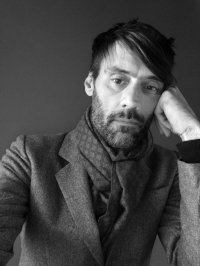
Bertrand Schefer
È scrittore e ha pubblicato alcuni romanzi e numerosi testi sull’esperienza delle immagini, fra i quali La Photo au-dessus du lit (2014) e Disparitions (2020). Filosofo di formazione, ha consacrato i suoi primi lavori alla riscoperta di testi fondamentali del Rinascimento, in particolare quelli legati alle questioni della rappresentazione e del visibile. Ha tradotto per la prima volta in francese opere di autori classici italiani come Pico della Mirandola e Marsilio Ficino. Nel 2003 è uscita in Francia la sua traduzione dello Zibaldone di Leopardi.
Author's books
Francesca Woodman
Bertrand Schefer
pages: 68 pages
‘History is not in the image, but in our relationship with the image, in what it deposits in us,’ writes Bertrand Schefer, who first saw some of Francesca Woodman's photographs in the late 1990s and was thunderstruck by them. Those photographs, so repelling to him at first, return over the years to question him, to torment him, incessant as dro
